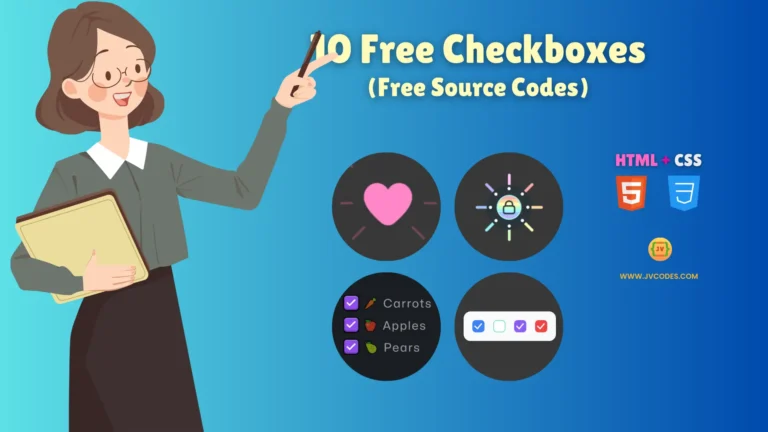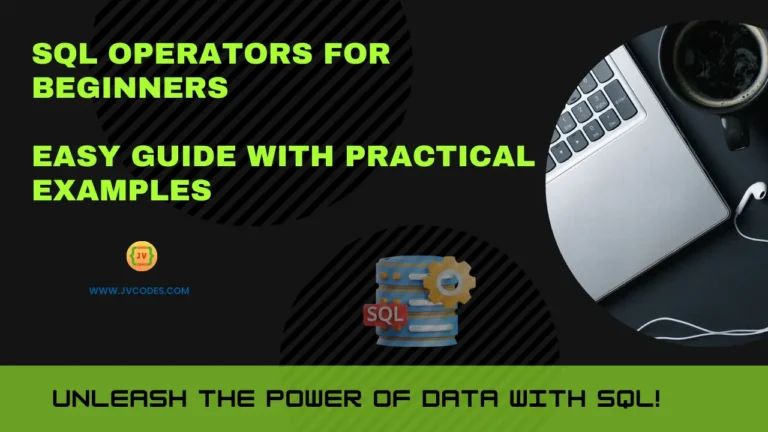What is SQL? How to Write Clean and Correct SQL Commands for Beginners
Are you new to databases? All new database starters necessarily come across SQL. Working with data requires knowledge of the SQL programming language.
This article provides a basic introduction to SQL by explaining its definition as well as its functions and methods for producing correct and clean commands for beginners.
What is SQL?
SQL stands for Structured Query Language.
SQL functions as an interface that communicates with databases. Users require SQL statements to perform storage, data retrieval, or modification tasks on the database.
Experts debate whether SQL functions as a programming language. The Structured Query Language operates as a query system instead of a complete programming language.
What does SQL stand for?
Structured Query Language is what SQL stands for, which you can easily remember.
What is SQL Used For?
SQL is used for many things.
- The system allows you to design a new database structure.
- Users can add fresh entries or modify existing information and eliminate faulty data points through SQL protocols.
- The digital operation of Facebook, Amazon, and Google depends on daily SQL usage.
- The main role of SQL systems involves data management purposes.
Key Concepts of SQL
Before writing SQL, you should know these words:
- A database is a place to store data.
- A table is a group of related data.
- A row is a single record in a table.
- A column is a specific type of information in the table.
People also ask, is SQL a language? Yes, SQL is a language made for databases!
Some popular databases that use SQL are MySQL, PostgreSQL, and SQL Server. By the way, what is SQL Server?—It is a powerful database system made by Microsoft.
Basic SQL Commands for Beginners
Here are some basic commands you must know:
- SELECT — retrieve data from a table.
- INSERT — add new data.
- UPDATE — modify existing data.
- DELETE — remove data you don’t need.
- CREATE TABLE — make a new table.
- DROP TABLE — remove a table forever.
Here is a basic SQL code to create a database.
CREATE DATABASE my_database;
Explanation:
CREATE DATABASEis the command.my_databaseis the name of your new database.
Here is the basic SQL code to create a table.
CREATE DATABASE my_database; USE my_database; CREATE TABLE student_table;
Explanation:
CREATE TABLEis the command.USEis the command to use the current database.student_tableis the name of the new table.
Full SQL example with data
-- Create the database
CREATE DATABASE my_database;
-- Use the database
USE my_database;
-- Create the table
CREATE TABLE student_table (
student_id INT PRIMARY KEY AUTO_INCREMENT,
first_name VARCHAR(50),
last_name VARCHAR(50),
age INT,
city VARCHAR(50)
);
-- Insert 10 entries
INSERT INTO student_table (first_name, last_name, age, city) VALUES
('John', 'Smith', 20, 'New York'),
('Emma', 'Johnson', 22, 'Los Angeles'),
('Liam', 'Williams', 19, 'Chicago'),
('Olivia', 'Brown', 21, 'Houston'),
('Noah', 'Jones', 20, 'Phoenix'),
('Ava', 'Garcia', 23, 'Philadelphia'),
('Sophia', 'Martinez', 18, 'San Antonio'),
('Mason', 'Davis', 24, 'San Diego'),
('Isabella', 'Lopez', 22, 'Dallas'),
('James', 'Gonzalez', 19, 'San Jose');
How to display SQL table?
You just run the following SQL command to display SQL table:
SELECT * FROM student_table;
| student_id | first_name | last_name | age | city |
|---|---|---|---|---|
| 1 | John | Smith | 20 | New York |
| 2 | Emma | Johnson | 22 | Los Angeles |
| 3 | Liam | Williams | 19 | Chicago |
| 4 | Olivia | Brown | 21 | Houston |
| 5 | Noah | Jones | 20 | Phoenix |
| 6 | Ava | Garcia | 23 | Philadelphia |
| 7 | Sophia | Martinez | 18 | San Antonio |
| 8 | Mason | Davis | 24 | San Diego |
| 9 | Isabella | Lopez | 22 | Dallas |
| 10 | James | Gonzalez | 19 | San Jose |
Tips to Write Clean and Correct SQL
The writing of clean SQL makes your work easier. Here are some easy tips:
- Use capital letters for the words of SQL. (Example: SELECT, FROM)
- Give short, meaningful names to tables and columns.
- Indent your queries and add spaces.
- Write comments for long queries.
- Good SQL is neat and saves time!
Common Mistakes Beginners Make
Beginners often make mistakes. Here are a few:
- Attempting to forget the WHERE clause while updating or deleting.
- Selecting all columns but needed.
- Giving weird names to the table and its columns.
- Making tables without taking data types into account.
- Do it to save big problems later and avoid these small mistakes.
Best Practices for Beginners
Here are the tips if you wish to become better:
- Plan your query before you write.
- Practice normalization — keep your tables simple.
- Backup your database often.
- Try to learn basic query optimization.
Also, always be careful of what is SQL injection.
SQL injection is a hacking trick where someone tries to harm your database.
So, learn how to prevent SQL injection attacks early!
How Long Does It Take to Learn SQL?
How long does it take to learn SQL is the same question asked by many beginners.
Happy news, it’s quick!
However, if you study every day, you should be able to learn basic SQL within 2 to 4 weeks.
Doing practice every day, you will learn it quicker.
How Can I Learn SQL?
Learning SQL is easy today. It is possible to learn online for free. There are lots of websites and YouTube channels that begin with SQL from zero. There’s no time to reflect on SQL basics; start now by searching for How can I learn SQL?”
Practice daily by writing small queries and working with sample databases to improve your skills. Here are some resources to master SQL.
SQL Roadmap
Have a base for SQL roadmap by learning commands such as SELECT, INSERT, UPDATE, and DELETE. You should then proceed to creating tables and table relationships and joins. Once you’re comfortable, go to some advanced technologies like subqueries, indexes, views, stored procedures, etc.
Last, give yourselves a final test on real-world database projects.
SQL Cheat Sheets
At the same time, SQL cheat sheets are great to have as a reference to the important syntax and remember it when you need to. They contain the basics of data types, functions, and a variety of joins. Also, you can easily find free SQL cheat sheets on JV Codes.
A quick trick—have one nearby and practice so that you will learn faster and smoother.
SQL Books
SQL can be learned by books. “Learning SQL” by Alan Beaulieu and Practical SQL are some good starting points for beginners. These books explain concepts very well, give good real-world examples, and have good exercises.
SQL Interview Questions
Practicing SQL interview questions is very important if you are preparing for job interviews. Instead, involve yourself in questions such as “What is a JOIN,” “What is the difference between WHERE and HAVING,” or “What is normalization?” Additionally, it is advisable to solve real query problems and explain those answers with confidence.
SQL Projects
Mastering SQL is one of the best ways to work on projects. Now try entering a small sales tracking system, a library database, or a student management system.
Projects improve your SQL logic and give you confidence to handle real databases easily.
1. Library Database Project
-- Create the library database
CREATE DATABASE library_db;
USE library_db;
-- Create books table
CREATE TABLE books (
book_id INT PRIMARY KEY AUTO_INCREMENT,
title VARCHAR(100),
author VARCHAR(100),
genre VARCHAR(50),
publication_year INT
);
-- Insert 10 records into books table
INSERT INTO books (title, author, genre, publication_year) VALUES
('To Kill a Mockingbird', 'Harper Lee', 'Fiction', 1960),
('1984', 'George Orwell', 'Dystopian', 1949),
('Moby-Dick', 'Herman Melville', 'Adventure', 1851),
('The Great Gatsby', 'F. Scott Fitzgerald', 'Fiction', 1925),
('Pride and Prejudice', 'Jane Austen', 'Romance', 1813),
('The Catcher in the Rye', 'J.D. Salinger', 'Fiction', 1951),
('The Hobbit', 'J.R.R. Tolkien', 'Fantasy', 1937),
('War and Peace', 'Leo Tolstoy', 'Historical Fiction', 1869),
('The Odyssey', 'Homer', 'Epic', 1870),
('Crime and Punishment', 'Fyodor Dostoevsky', 'Psychological Fiction', 1866)
| book_id | title | author | genre | publication_year |
|---|---|---|---|---|
| 1 | To Kill a Mockingbird | Harper Lee | Fiction | 1960 |
| 2 | 1984 | George Orwell | Dystopian | 1949 |
| 3 | Moby-Dick | Herman Melville | Adventure | 1851 |
| 4 | The Great Gatsby | F. Scott Fitzgerald | Fiction | 1925 |
| 5 | Pride and Prejudice | Jane Austen | Romance | 1813 |
| 6 | The Catcher in the Rye | J.D. Salinger | Fiction | 1951 |
| 7 | The Hobbit | J.R.R. Tolkien | Fantasy | 1937 |
| 8 | War and Peace | Leo Tolstoy | Historical Fiction | 1869 |
| 9 | The Odyssey | Homer | Epic | 1870 |
| 10 | Crime and Punishment | Fyodor Dostoevsky | Psychological Fiction | 1866 |
2. Student Management System
-- Create the student management system database
CREATE DATABASE student_management;
USE student_management;
-- Create students table
CREATE TABLE students (
student_id INT PRIMARY KEY AUTO_INCREMENT,
first_name VARCHAR(50),
last_name VARCHAR(50),
age INT,
major VARCHAR(50)
);
-- Insert 10 records into students table
INSERT INTO students (first_name, last_name, age, major) VALUES
('John', 'Smith', 20, 'Computer Science'),
('Emma', 'Johnson', 22, 'Mathematics'),
('Liam', 'Williams', 19, 'Biology'),
('Olivia', 'Brown', 21, 'History'),
('Noah', 'Jones', 20, 'Physics'),
('Ava', 'Garcia', 23, 'Literature'),
('Sophia', 'Martinez', 18, 'Psychology'),
('Mason', 'Davis', 24, 'Chemistry'),
('Isabella', 'Lopez', 22, 'Engineering'),
('James', 'Gonzalez', 19, 'Economics');
| student_id | first_name | last_name | age | major |
|---|---|---|---|---|
| 1 | John | Smith | 20 | Computer Science |
| 2 | Emma | Johnson | 22 | Mathematics |
| 3 | Liam | Williams | 19 | Biology |
| 4 | Olivia | Brown | 21 | History |
| 5 | Noah | Jones | 20 | Physics |
| 6 | Ava | Garcia | 23 | Literature |
| 7 | Sophia | Martinez | 18 | Psychology |
| 8 | Mason | Davis | 24 | Chemistry |
| 9 | Isabella | Lopez | 22 | Engineering |
| 10 | James | Gonzalez | 19 | Economics |
3. Sales Record Project
-- Create the sales record project database
CREATE DATABASE sales_record;
USE sales_record;
-- Create sales table
CREATE TABLE sales (
sale_id INT PRIMARY KEY AUTO_INCREMENT,
product_name VARCHAR(100),
quantity INT,
price DECIMAL(10, 2),
sale_date DATE
);
-- Insert 10 records into sales table
INSERT INTO sales (product_name, quantity, price, sale_date) VALUES
('Laptop', 5, 999.99, '2025-04-01'),
('Smartphone', 12, 499.49, '2025-04-02'),
('Tablet', 7, 349.99, '2025-04-03'),
('Headphones', 20, 89.99, '2025-04-04'),
('Smartwatch', 10, 199.99, '2025-04-05'),
('Keyboard', 15, 49.99, '2025-04-06'),
('Mouse', 25, 29.99, '2025-04-07'),
('Monitor', 8, 149.99, '2025-04-08'),
('Printer', 6, 119.99, '2025-04-09'),
('External Hard Drive', 4, 79.99, '2025-04-10');
| sale_id | product_name | quantity | price | sale_date |
|---|---|---|---|---|
| 1 | Laptop | 5 | 999.99 | 2025-04-01 |
| 2 | Smartphone | 12 | 499.49 | 2025-04-02 |
| 3 | Tablet | 7 | 349.99 | 2025-04-03 |
| 4 | Headphones | 20 | 89.99 | 2025-04-04 |
| 5 | Smartwatch | 10 | 199.99 | 2025-04-05 |
| 6 | Keyboard | 15 | 49.99 | 2025-04-06 |
| 7 | Mouse | 25 | 29.99 | 2025-04-07 |
| 8 | Monitor | 8 | 149.99 | 2025-04-08 |
| 9 | Printer | 6 | 119.99 | 2025-04-09 |
| 10 | External Hard Drive | 4 | 79.99 | 2025-04-10 |
Conclusion
Hopefully this article helped you understand what is SQL. If learning databases is something you want to be serious about, you need to learn how to make clean and correct SQL commands.
Remember, clean SQL is the way to extract fast, safe, and easy data for anything.
With the above said, this guide for What is SQL? In How to Write Clean and Correct SQL Commands for a Beginner, you have what it takes to kick-start your SQL adventure.
Gain some SQL knowledge today and become an SQL expert!













